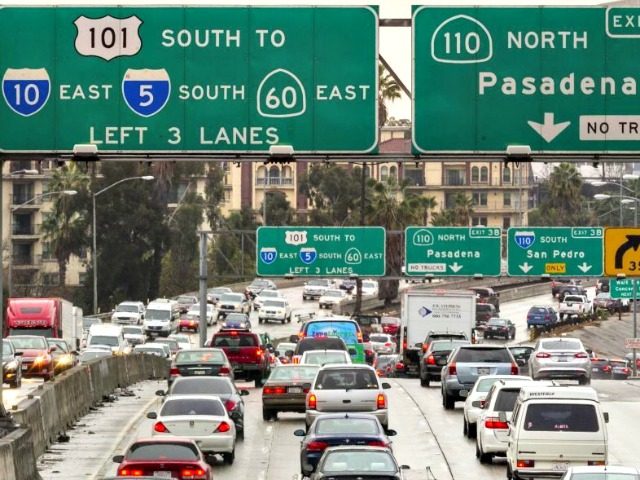Los Angeles County’s Metro Transportation Authority Board voted to end allowing solo-occupied zero-emission vehicles free use of the highly trafficked 10 and 110 freeway toll lanes.
The Metro perc for solo-passenger electric and hydrogen vehicles on the Harbor and Santa Monica freeway toll lanes was always controversial. The San Francisco Bay Area ended a similar perc in 2012 and the OC Toll Road never offered the freebie. Metro stated that they will transition the policy change over the next 60 to 90 days, and solo-drivers with state-issued clean-air stickers will not be charged a toll until at least November.
Metro board member and Los Angeles City Councilman Paul Kerkorian told KTLA Television, “I just can’t rationalize how that serves a social equity argument. To me, that is not a valid argument.” Kerkorian added, “If the question is social equity, I cannot rationalize subsidizing someone who puts their tie on and hops in their Tesla to drive to work, and not subsidizing a guy who throws his tools in the back of his Toyota pickup truck to go to work.”
Although the new policy was plugged to sound like good social justice policy, the real issue appears to be loose enforcement on the Metro’s toll lanes have resulted in more than 25 percent of the drivers using the lanes each day skip paying the tolls and defeat the so-called demand-based pricing, according to the LA Times.
The Metro in partnership with Caltrans, initially launched a 1-year demonstration program by converting 11 miles of High-Occupancy-Vehicle (HOV) lanes on the Harbor Freeway Transitway near downtown Los Angeles and 14 miles on the I-10 San Bernardino Freeway between Union Station and the I-605 Freeway to High-Occupancy-Toll (HOT) lanes that allowed solo drivers to use the lanes for a toll.
The ExpressLanes program seemingly got off to a great start with Metro selling about 50,000 FasTrak transponders to solo drivers that were charged tolls that varied from .25 cents a mile to a maximum of $1.40 a mile during relatively non-congested hours of the day. The high demand congested periods were reserved for supposed HOV only.
But the transponders have a switch that allows signaling multi-passenger or solo-passenger. About 25 percent of the toll lane traffic during the heavily congested periods turned out to be solo-drivers that gamed the system by falsely switching into HOV mode.
The Metro claims that they are developing a new system with artificial intelligence and facial recognition technology that would automatically scan each ExpressLane user to confirm that the number of vehicle occupants matched up with the FasTrack setting. But so far, the available scanning technology does not meet Metro’s need.
The California Legislature changed the minimum requirement for HOV lanes to two-persons but has recently allowed transportation districts the flexibility to three-person carpools during the peak periods.
The Metro congestion due to the cheaters on its HOV lanes has caused the average speeds to fall below 45-miles per hour, which is a violation of federal car-pool rules.
The LA Metro is not alone in violating federal rules. A 2015 California Department of Transportation report revealed that about 65 percent of all the high-occupancy-vehicle lanes in California was officially designated as “ degraded for the July through December period that year.

COMMENTS
Please let us know if you're having issues with commenting.